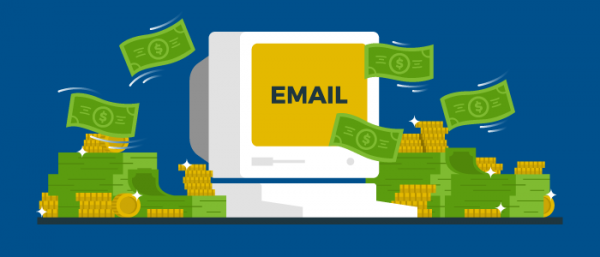
You’ve likely heard us talk about Six Sigma email marketing campaign management so much that you think we invented it. While we certainly did not invent Six Sigma, we have learned how to successfully adapt the methodology toward direct response email marketing.
Six Sigma is a disciplined, data-driven approach for the continuous improvement of any product, process, or service. It seeks to continuously remove the weakest-performing components and replace them with better-performing components – a process and an approach we believe works well when applied to direct response and email marketing.
In direct mail, this could be testing three different postcards with unique URLs and tracking codes, then eliminating the bottom performer and testing a new approach.
In email, you can test more frequently than direct mail. We are deploying up to six Spotlight and Preview campaigns per week with many of our publishing partners. Compare that to direct mail, where the testing frequency is much more limited.
Let’s talk about how you can use email marketing to leverage the principles of Six Sigma.

5 Six Sigma Email Marketing Campaign Management Strategies
In their book The Six Sigma Way, authors Peter Pande and Robert Neuman say that even more important than the tools you’ll use to implement Six Sigma, is the mindset you have approaching it. You must be asking the right questions and then acting and responding to the results. If you’re prepared to do that, let me share some of the secrets to Six Sigma email marketing campaign management we’ve learned from managing this process for our publishing partners.
1.  Develop a series of creative to test.
Develop a series of creative to test.
For example, to promote an event, we developed a series of eight promotional Spotlight emails. All of the emails tackle a different angle to which we hope readers will respond. For example, we have one Spotlight that shares testimonials from past attendees, while another one hones in on the sessions, and another features the benefits of attending. Only by creating these templates can we determine what people care about most, and they let us know by opening the email, clicking through the email, and registering.
In our series of eight, whichever email scores lowest gets dropped. We run through the series of Spotlights again over the course of a month or so, with the seven winners and new creative. At the end, we again ditch the loser, add new creative to test, and repeat. Since our promotion is for an event, we have a limited timeline to work with, but for a publisher selling subscriptions, there’s no end date, which means the longer you test, the better your series performs because you’re quickly collecting a series of highly impactful Spotlights that will continue to grow your revenue.
2. Brainstorm a series of offers to test.
As you know, testing refers to more than just copy and creative, and testing your offers may be where the real magic happens.
Selling your magazine without a soft offer, like a free trial or a free incentive, is tough. We’ve seen hard offers work with low introductory prices, but at full price, selling these alone can be a hard way to make a living.
If your system has the capability to show low-priced introductory offers to non-buyers, you may find success with introductory discounts as deep as 75 to 80%, which renew 12 months later to full price at normal conversion rates.
3. Decide on A/B Split Testing or Sequential Testing
 In A/B split testing, the marketing list is split equally, and each split receives a unique test element (offer, or creative, or subject line, etc). If the response is high enough, you can get a statistically valid result. We recommend repeating the test for several campaigns throughout the month to increase your confidence level.
In A/B split testing, the marketing list is split equally, and each split receives a unique test element (offer, or creative, or subject line, etc). If the response is high enough, you can get a statistically valid result. We recommend repeating the test for several campaigns throughout the month to increase your confidence level.
In sequential testing, we test one element, typically the offer, for a set time period, for example one month. The next month, we test another offer. While this may introduce more variables, it is often the only way to get statistically valid results.
While either approach to testing is a significant amount of work, requiring active coordination between editorial and marketing, on-the-spot analytics, great copywriting, and interaction with fulfillment to manage the offers, we strongly recommend all publishers use these methods for offer testing.
4. Leverage your editorial team for relevant, curated content.
Beyond the typical offer-focused Spotlight promotions, how can you more effectively sell an all-access membership that includes print, web, and a digital library? You can leverage your editorial team and their expertise to create curated collections. We have found that Library Previews, which tout these curated Special Collections, have been particularly successful components of our email marketing campaign management efforts
5. Act on the results.
 Using any one or all of the strategies above is a waste of resources if you’re not ready to act on your results. If you’re deploying a series of eight spotlights for example, be prepared to find the loser quickly, and have a new piece of creative to test right behind it.
Using any one or all of the strategies above is a waste of resources if you’re not ready to act on your results. If you’re deploying a series of eight spotlights for example, be prepared to find the loser quickly, and have a new piece of creative to test right behind it.
Be disciplined and let the data speak for itself. And if you’d like help with Six Sigma email marketing campaign management, reach out to Christy at christy@mequoda.com


